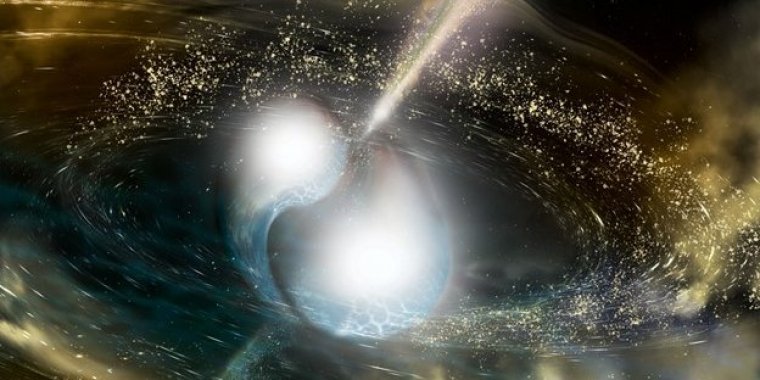| News / Science News |
Neutron star mergers a primary source of cosmic heavy metals
Researchers at MIT and the University of New Hampshire embarked on a novel scientific endeavor to quantify and analyze sources of heavy metals in the solar system. Scientists have long known that when neutron stars collide with a black hole or another neutron star the explosion can produce heavy metals, but the magnitude was unclear.

An artist’s depiction of Earth among the cosmic chaos of a collision between neutron stars. Photo: National Science Foundation/LIGO/Sonoma State University/A. Simonnet, edited by MIT News
The researchers discovered that when neutron stars collide, a massive amount of heavy metals is discharged.
The study indicates that neutron star collisions have the capacity to emit up to 100 times more heavy metals than when neutron stars smash into black holes.
A collision between two neutron stars was detected and observed for the first time at LIGO and Virgo observatories in 2017.
The presence of heavy metals was detected in remnants of an explosion that happened 130 million light-years ago and was considerably greater than anticipated.
"The magnitude of gold produced in the merger was equivalent to several times the mass of the Earth," said co-author Hsin-Yu Chen. "That entirely changed the picture. The math showed that binary neutron stars were a more efficient way to create heavy elements, compared to supernovae."
The data confirm that neutron star collisions have produced more heavy metals in the last 2.5 billion years than collisions between neutron stars and black holes. The findings could be key to understanding more about the production of heavy metals in the solar system.
"This research is an example of the power of combining gravitational wave observations with state-of-the-art numerical simulations,” said Pedro Marronetti, a program director in NSF’s Division of Physics.
“Results like these would have been impossible a decade ago, not just because of the lack of data, but because the codes to simulate mergers between neutron stars and black holes were not mature enough to give definitive answers. Now lines of scientific work are converging to provide answers to questions such as the origin of heavy elements." (National Science Foundation)
YOU MAY ALSO LIKE





